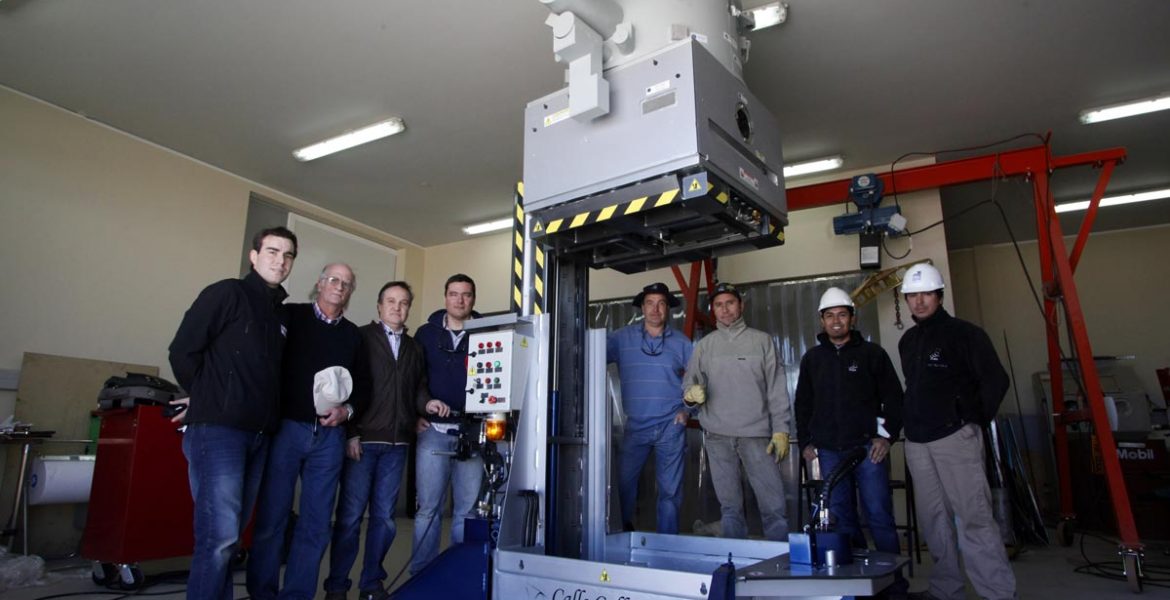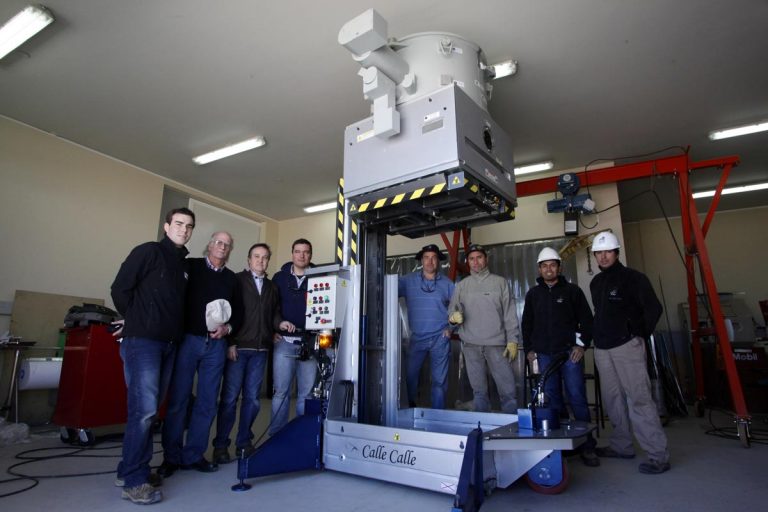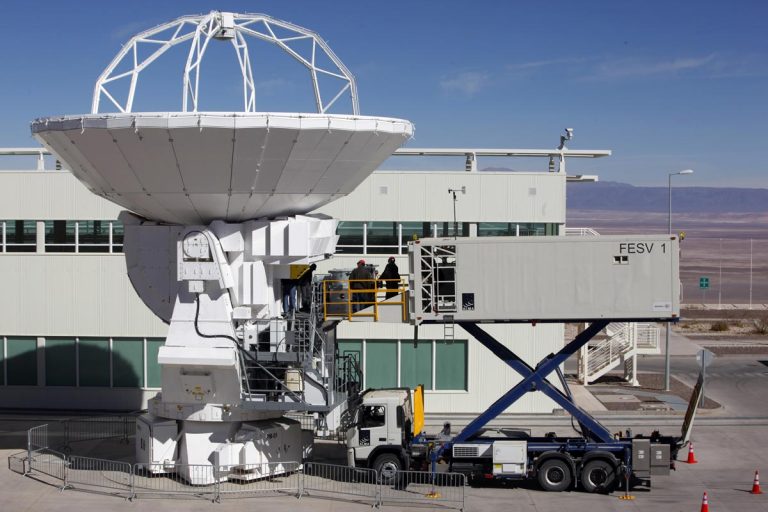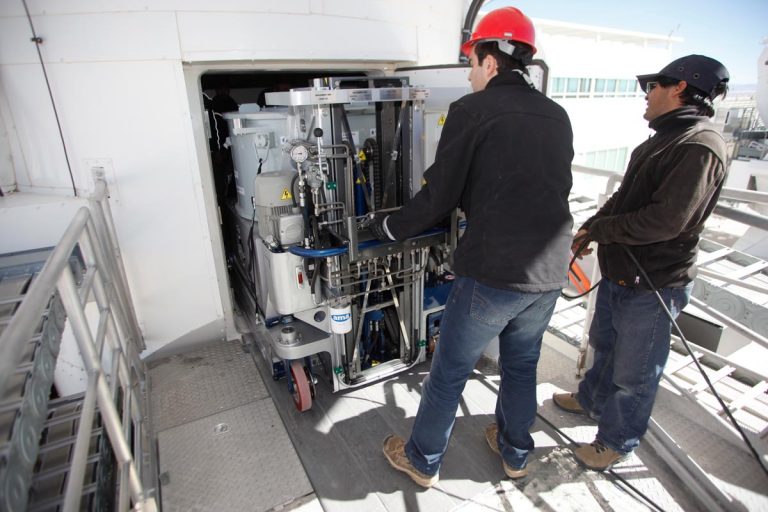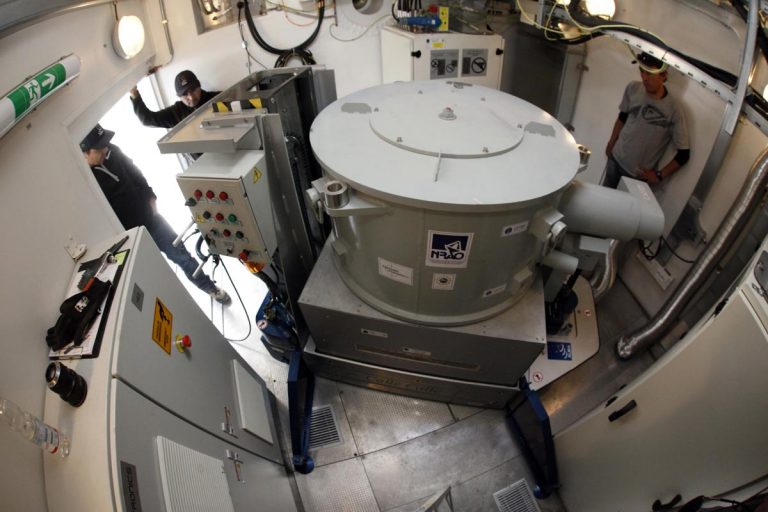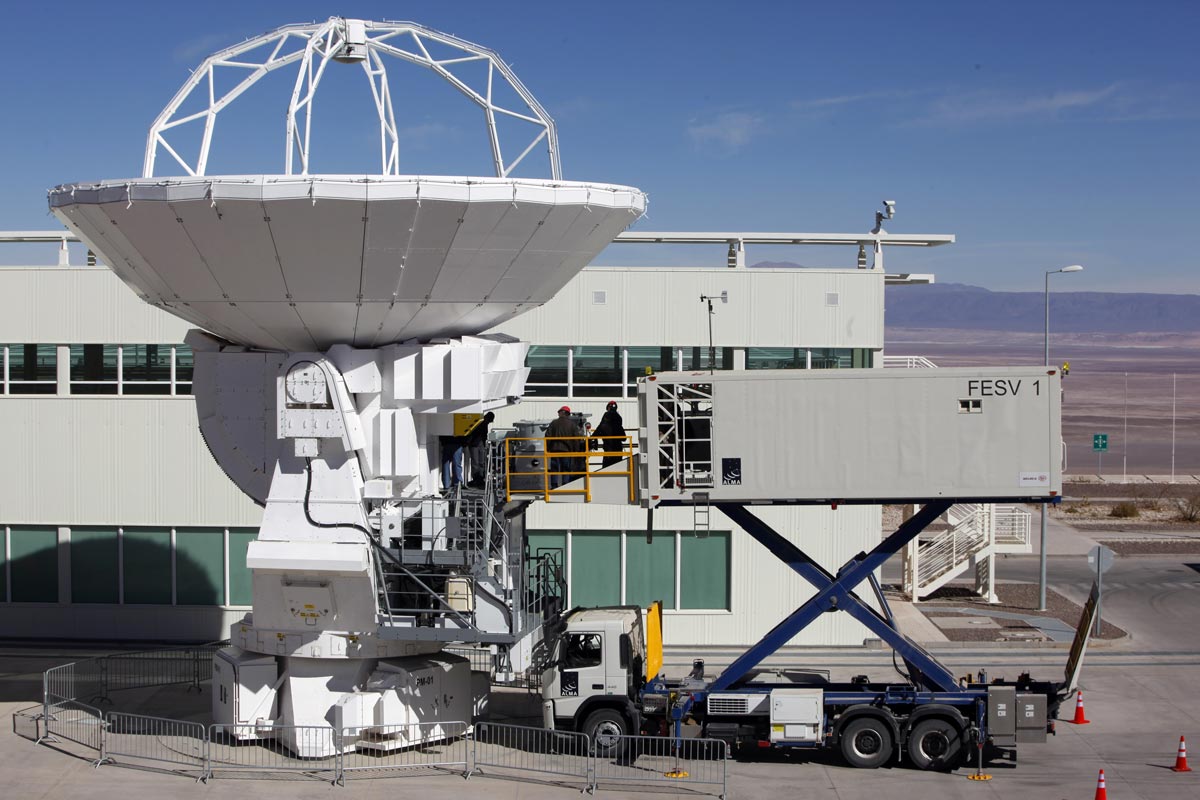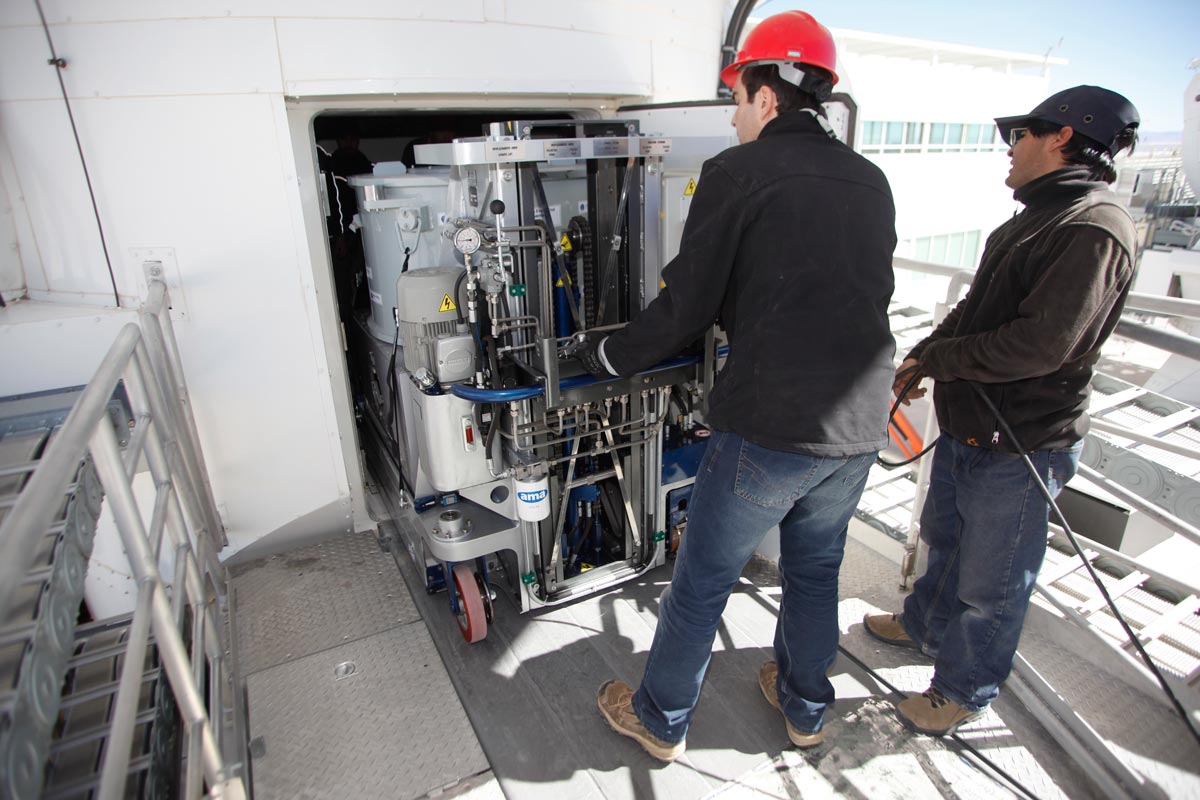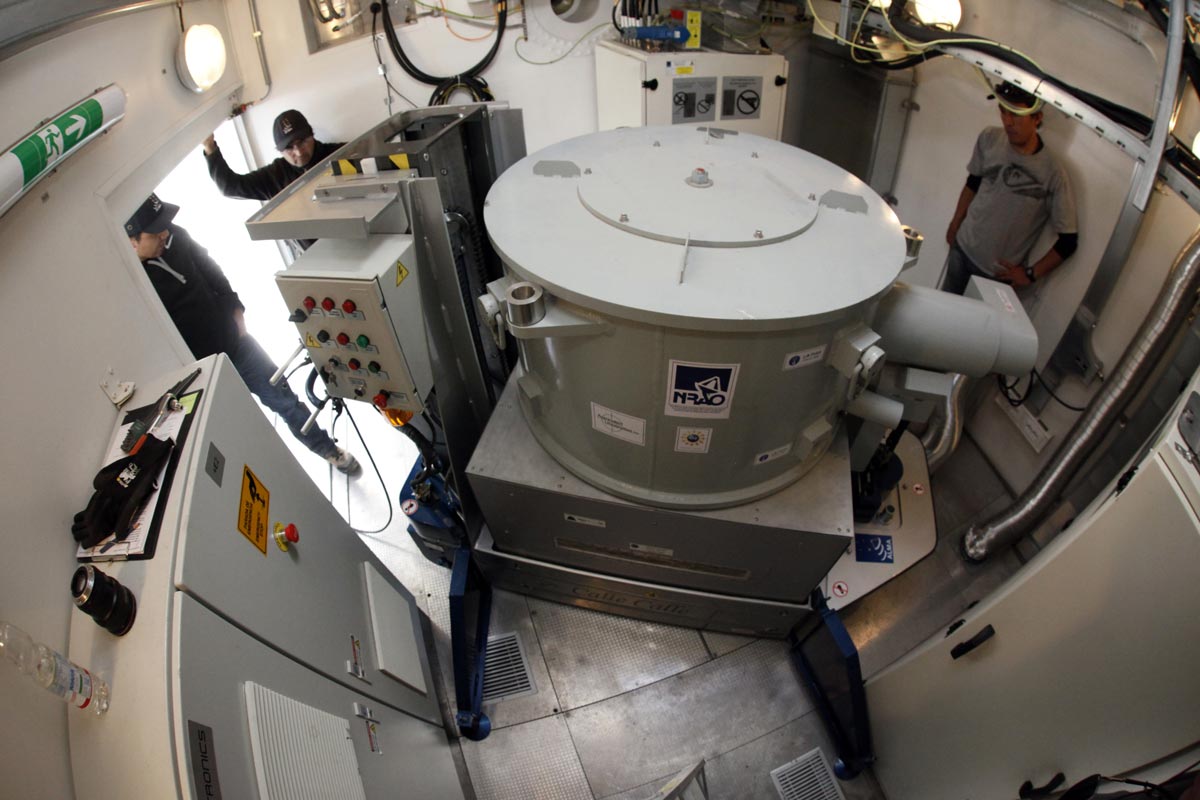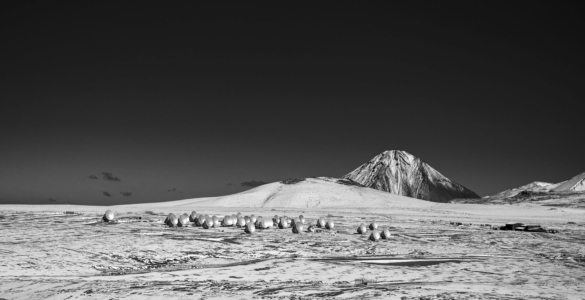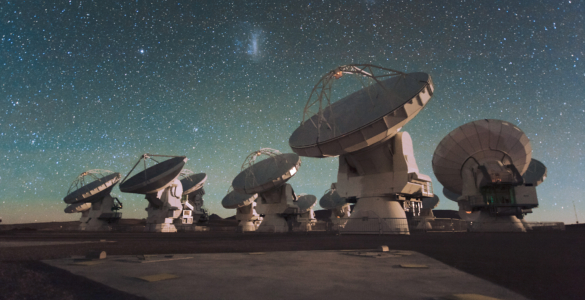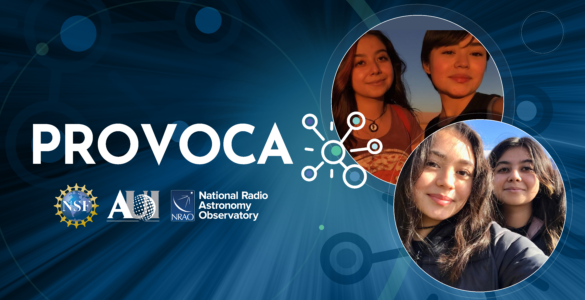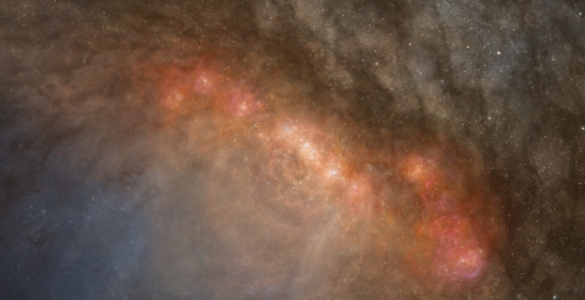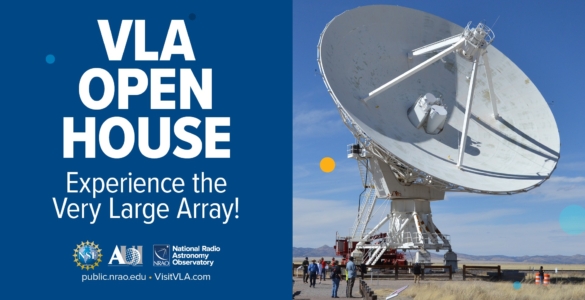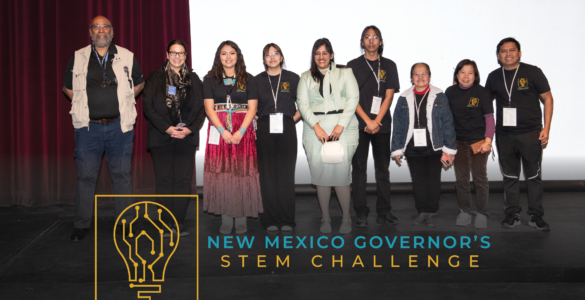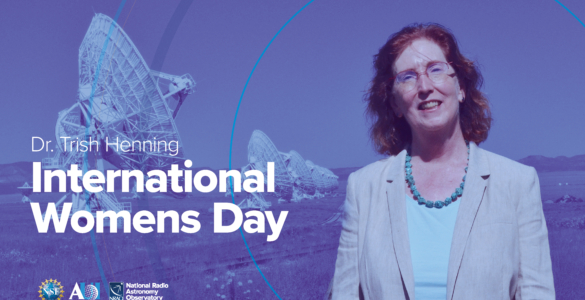The routine servicing and periodic upgrading of the receivers on ALMA’s 66 antennas require the careful removal and transport of a critical telescope component known as the “Front End” – a container supercooled to -269 degrees Celsius, which houses the sensitive receivers and other essential electronics of each antenna.
To make that task more efficient and routine, the National Radio Astronomy Observatory (NRAO) has delivered the first of ALMA’s four new Front End Handling Vehicles (FEHV), small yet sturdy elevator crane carts specifically designed to precisely maneuver and gently transport the ALMA Front Ends.
Moving and servicing these components has been, until now, a time-consuming task because of their extreme weight and delicate electronics. Each Front End package weighs approximately 750 kilograms (1,600 lbs) and must be lifted 1.5 – 2 meters above the floor inside the highly confined receiver room of each antenna. The new FEHVs were designed specifically to make that task safer, quicker, and more routine.
“The ALMA engineering team performs this maneuver approximately once every five days,” said Rodrigo Brito, leader of NRAO Final Acceptance Tiger Team, which supervises the official delivery of the manufacturing contribution from the North American partner of ALMA. “This adds up to approximately 2,000 hours of labor each year, so this new equipment will save a great deal of time and resources.”
The FEHVs were designed and built in Chile as part of the technological exchange policy with ALMA’s host country. They are the result of a three-year design and manufacturing collaboration between NRAO and the Chilean companies Prolaser and Maestranza Walper, which are located in the city of Valdivia in southern Chile’s river district. Each FEHV has been given a specific name inspired by local tourist attractions. The first was named after the Calle-Calle river, which flows through the city.
The FEHVs work in conjunction with the Front End Service Vehicles, of which there are two at ALMA, both delievered by NRAO. These service vehicles use a scissor lift system to come level with the antenna’s receiver room. They also keep the Front Ends operating at extremely low temperatures during transport and servicing.
The NRAO team responsible for the design and fabrication of the FEHV included: Claudio Navarro, Martin Oestreich, Rodrigo Brito, Martin Mündnich, Ricardo Hohf, Juan Carlos Mättig, Alfredo Walper, Pablo Walper, Mauricio Pilleux and William Randolph.
# # #
The National Radio Astronomy Observatory is a facility of the National Science Foundation, operated under cooperative agreement by Associated Universities, Inc.
The Atacama Large Millimeter/submillimeter Array (ALMA), an international astronomy facility, is a partnership of Europe, North America and East Asia in cooperation with the Republic of Chile. ALMA is funded in Europe by the European Southern Observatory (ESO), in North America by the U.S. National Science Foundation (NSF) in cooperation with the National Research Council of Canada (NRC) and the National Science Council of Taiwan (NSC) and in East Asia by the National Institutes of Natural Sciences (NINS) of Japan in cooperation with the Academia Sinica (AS) in Taiwan.


